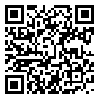Volume 6, Issue 4 (Occupational Medicine Quarterly Journal 2015)
tkj 2015, 6(4): 19-29 |
Back to browse issues page
Download citation:
BibTeX | RIS | EndNote | Medlars | ProCite | Reference Manager | RefWorks
Send citation to:



BibTeX | RIS | EndNote | Medlars | ProCite | Reference Manager | RefWorks
Send citation to:
Salahian A, Matinisadr M, Nouri M, Malekpor N. Burnout and its predictor’s variables in Mobarakeh Steel Company. tkj 2015; 6 (4) :19-29
URL: http://tkj.ssu.ac.ir/article-1-160-en.html
URL: http://tkj.ssu.ac.ir/article-1-160-en.html
university of isfahan , salahyanafshin@yahoo.com
Abstract: (6512 Views)
Background: Employed population comprise the bulk of people in each society, who are employed in different organizations, and organizations with regard to climate, type of jobs and their duties are faced with some concerns. One of the problems that can threaten human resource is burnout syndrome. Methods: Statistical population of this study consisted of 7580 personnel with high school or university degrees in Mobarakeh Steel Company. Statistical sample consisted of 273 subjects who were selected by proportional stratified sampling method the study instruments included burnout inventory, work-family conflict, workload, role clarity stress, job satisfaction, turnover intention. Data were analyzed by AMOS software and structural equation modeling. Results: Findings indicated that in proposed model, predictor variables predict burnout by mediating job stress, and burnout has a significant relationship with outcome variables. Conclusion: In attention to the importance of burnout and its relationship with outcome variables, to change and moderate the predictors and decrease job stress, we proposed that in organizations, interventions should be put in their instructional schedules.
Type of Study: Research |
Subject:
General
Received: 2012/10/2 | Accepted: 2015/03/1 | Published: 2015/03/1
Received: 2012/10/2 | Accepted: 2015/03/1 | Published: 2015/03/1
Send email to the article author
| Rights and permissions | |
 |
This work is licensed under a Creative Commons Attribution-NonCommercial 4.0 International License. |





